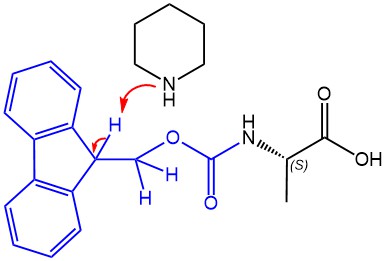Welcome to Iris Biotech
For better service please confirm your country and language we detected.
confirm selection

For better service please confirm your country and language we detected.

Thank you very much for your interest in our products. All prices listed on our website are ex-works, Germany, and may attract customs duties when imported.
You may/will be contacted by the shipping company for additional documentation that may be required by the US Customs for clearance.
We offer you the convenience of buying through a local partner, Peptide Solutions LLC who can import the shipment as well as prepay the customs duties and brokerage on your behalf and provide the convenience of a domestic sale.
Continue to Iris Biotech GmbHSend request to US distributorPublished on 14.09.2017

However, in case of difficult or sensitive sequences, there are alternative deprotection reagents that can be employed, such as the non-nucleophilic base DBU in DMF. Another useful alternative to piperidine is 4-methylpiperidine, which has been shown to deprotect the Fmoc group as efficiently as piperidine (Hachmann and Lebl, J. Comb. Chem. 2006).
An additional benefit of both DBU and 4-methylpiperidine is that in contrast to piperidine, these compounds are no controlled substances and do not require an end-user declaration. While piperidine requires a lot of paperwork and is subject to various export limitations, this is not the case for DBU and 4-methylpiperidine.
In our webshop you can find all these tried and tested reagents for Fmoc removal. The latest addition to this range is a premixed solution of 20% piperidine in DMF that can be conveniently used straight out of the bottle.

Removal of the relatively acidic proton on C9 of the fluorenyl moiety by piperidine.
→ Be prepared for the step following Fmoc deprotection: check out our large selection of Coupling Reagents.